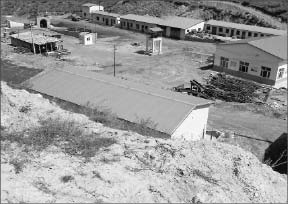Feng Lishe was born in Xinjiang – a province in remote northwestern China where per capita GDP typically averages US$2,000 a year in the cities, and about half that in the countryside.
Today Feng is one of China’s richest men. The entrepreneur ranked 351st with US$320 million on the 2007 “China Rich List,” an annual survey conducted by the Hurun Report, a Shanghai-based publishing house. In 2006, he ranked 152nd with a net worth of about US$250 million.
As a young man in the 1980s, Feng saw that there was money to be made in agriculture and started an innovative program that lent money and cows to local farmers, who in turn supplied his milk plants with raw milk, enabling him to start and grow a dairy industry in the province. He later diversified into cattle ranching and even worked with cattle cloning technologies.
But like many private entrepreneurs of his generation, Feng also got involved in a number of other industries, including real estate, automotive, restaurants and mining.
Most recently he has expanded his activities in coal mining, with an ambitious goal of producing 5 million tonnes of coal a year by 2016.
Feng is president and director of Calgary-headquartered China Coal (CKO-V), whose strategy is to acquire and consolidate small and medium-sized private coal mines in China. He started down this path after China implemented its national coal policy in 2007. The policy suspended approval for new and existing small-scale coal projects and gave power to local and provincial governments to enlarge, improve, or shut down coal mines smaller than 90,000 tonnes a year in Xinjiang province and 300,000 tonnes a year in most other provinces of the country.
“Essentially China Coal provides capital for expansion and the efficient, safe operation of a small- to mid-size mine, liquidity, and operational resources to the operators of carefully selected coal mines that are undervalued and can be upgraded and expanded, and transparent governance and reporting for its public and private partners,” explains Mark Roth, the company’s chief financial officer. “There is no other Canadian public coal company that is doing exactly what we’re doing. Our consolidation program will buy up small operating mines and also pull them together with common marketing and sales systems.”
Roth describes Feng as “a dynamic, classic entrepreneur.” And because he hails from Xinjiang —- which holds an estimated 40% of China’s coal resources — Feng started his first coal development project there, a large coal-bed methane permit south of the city of Hami in the west of the province. The permit area has pipelines, railroads, highways and transmission systems that run directly through it.
China Coal’s second acquisition is a 60% stake in the Mei Feng mine for US$23 million (Feng’s brother, Feng Xinlong, controls the remaining 40% of the coal mine).
“Of the US$23 million, approximately US$14 million will be held in reserve to be applied against the immediate expansion of the mine,” Roth notes.
Mei Feng went into production in September 2010 and is expected to reach a production level of 360,000 tonnes a year by the third quarter of 2011.
Once the acquisition is completed later this year, China Coal will begin a feasibility study to expand the mine’s initial production capacity to 2 million tonnes per year.
At the end of March, engineering firm Norwest completed a National Instrument 43-101 technical report on Mei Feng, outlining thermal and higher-heat content coal reserves of 7.7 million tonnes and resources of 18.1 million tonnes. But China Coal says it believes there is a lot more coal to be found on the property.
“Given the small size of the permit area and elevation restrictions, which put constraints on Norwest’s reporting, more comprehensive Chinese reports indicate there may be an excess of 100 million tonnes of coal resources in the permit area,” Roth says.
Norwest’s reserve and resource estimate was based on just eight core drill holes. The company is launching a drill program this summer.
Another acquisition China Coal is working on is a US$30-million coal-loading and transfer facility in Shanxi that has current contracted throughput of about 6 million tonnes a year, but which the company believes can be expanded to 20 million tonnes.
China Coal plans to start its application process for a dual listing on the Hong Kong Stock Exchange before the end of 2012.
At presstime in Toronto, China Coal was trading at 28¢ per share. Over the last year, China Coal has traded in a range of 14.5¢ and 70¢ per share.


Be the first to comment on "China Coal aims to become a mid-tier producer (May 30, 2011)"